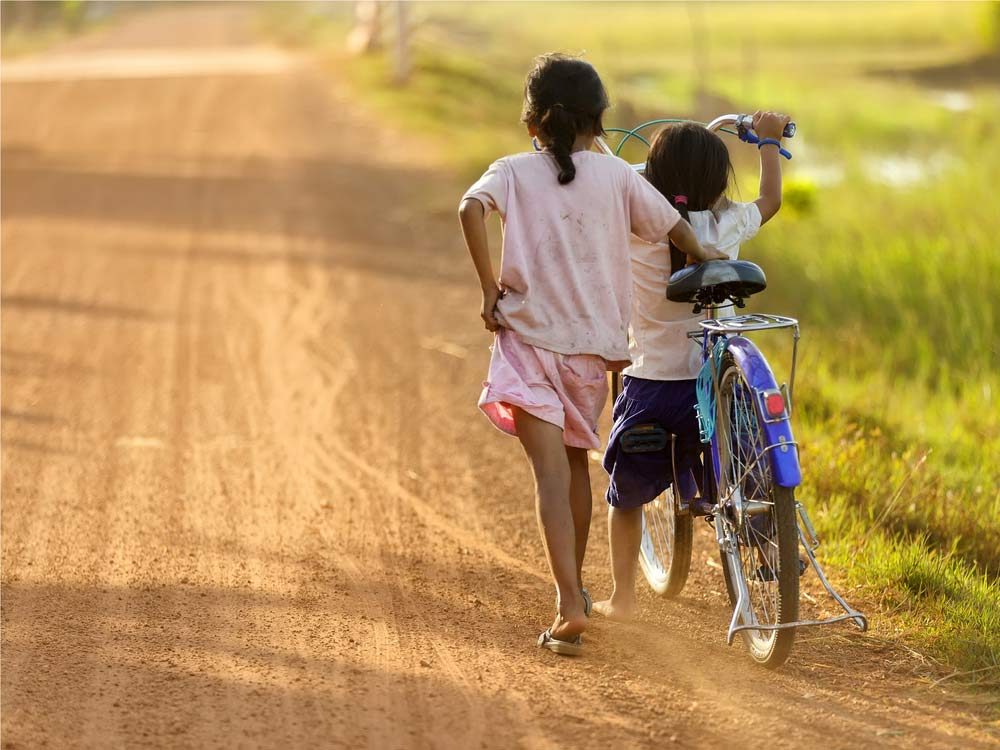
West Nile Virus
Where it’s common: Temperate and tropical regions like East Africa, Latin America and the Caribbean.
What to watch for: Got a run-of-the mill mosquito bite? Fret not. Is it coupled with fever, fatigue, headache, nausea, vomiting, swollen lymph glands, and a rash on the chest, stomach, or back? It’s time to seek medical attention. Eighty per cent of WNV cases are asymptomatic, so it’s crucial to take preventative steps. Wear long sleeves, use insect repellant with higher doses of active ingredients like DEET and picaridin, and use a bed net.

Malaria
Where it’s common: Africa, Central and South America, the Caribbean, Asia, Eastern Europe, and the South Pacific.
What to watch for: Unlike WNV, malaria symptoms tend to crop up anywhere between a week to a month after the female mosquito-borne infectious disease has entered your system. You’ll experience flu-like symptoms, including chills, nausea and fever. Talk to your doctor about taking an anti-malaria pill before, during and after your trip to ward against it.

Tuberculosis
Where it’s common: Asia, Sub-Saharan Africa and South and Central America.
What to watch for: Highly contagious and spread through the air via coughing, sneezing, speaking or singing, TB is a bacteria that primarily attacks the respiratory system. One way to determine if you have it is if your cough persists for more than three weeks, with other symptoms including, chest pain, coughing up blood, weakness, unexplained weight loss, lack of appetite, chills, fever and nighttime sweating. Make sure your child is part of the 90 per cent who have been inoculated with the BCG vaccine.

Norovirus
Where it’s common: Colder climates and confined spaces.
What to watch for: Dubbed “the winter vomiting bug” in the UK, norovirus is most commonly contracted in colder climates where people stay indoors and are within close proximity of one another. This also rings true for cruise ships, where many incidences can be traced back to an individual contaminating food with fecal matter and transmitting it to other passengers. The virus may be unpleasant and widespread (affecting up to 267 million people per year), but most people who experience its symptoms of diarrhea, low-grade fever, forceful vomiting and weakness recover within a few days.

Sexually Transmitted Infections
Where it’s common: Anywhere.
Where it’s common: What happens in Vegas might stay in Vegas, but an STI is a burden you may have to carry around with you for life. Different infections manifest in various ways (fertility complications, cold sores, loss of appetite and tenderness in the stomach, to name a few) and some are asymptomatic until it’s too late. If you’re currently taking oral contraceptives, you’re protected against pregnancy, but not infections. Only a few STI’s are entirely curable but fortunately, they are all treatable – and preventable. Always pack condoms and store them away from the sun and damaging oil-based products such as sunscreen and lipstick.

Traveller’s Diarrhea
Where it’s common: Developing countries including Central and South America, Mexico, the Middle East, Asia and Africa.
Where it’s common: The most common traveller’s illness largely affects infants, the elderly and those who are immunosuppressed. Consuming contaminated food or drink can lead to an urgent need to use the bathroom, bloating, nausea, dehydration and death if not treated immediately with antibiotics or fluids. As a rule of thumb, boil water or drink from packaged water bottles, even when brushing teeth. You would also be wise to carry hand sanitizer with an alcohol base of at least 60 per cent so as to avoid washing hands with contaminated water.

Dengue Fever
Where it’s common: India, Southeast Asia, Southern China and Africa.
Where it’s common: Yet another mosquito-borne tropical disease that’s on the rise, 80 per cent of dengue cases are asymptomatic, but can morph into sudden onset fever, weakness, nose bleeds, easy bruising and a headache typically experienced behind the eyes. Depending on the severity of the case, treatment can include oral or intravenous rehydration or a blood transfusion. For quick pain relief, opt for acetaminophen tablets instead of aspirin, which could worsen bleeding. As per usual, standard protocol is to ward against the illness with liberal use of insect repellant, long sleeves and netted sleeping grounds.

Tetanus
Where it’s common: Developing countries without sufficient access to immunization.
Where it’s common: Often dubbed “lockjaw,” tetanus is bacteria found in dirt, dust, soil and fecal matter that travel up nerves leading to muscular stiffness. In many cases, it can be fatal, especially if contracted through an open wound, animal bite or burn. Those suffering from tetanus experience spasms on the neck, buttocks, back and chest with difficulty swallowing and a high fever. Newborns, individuals above the age of 60 and those who haven’t been immunized are particularly at risk.